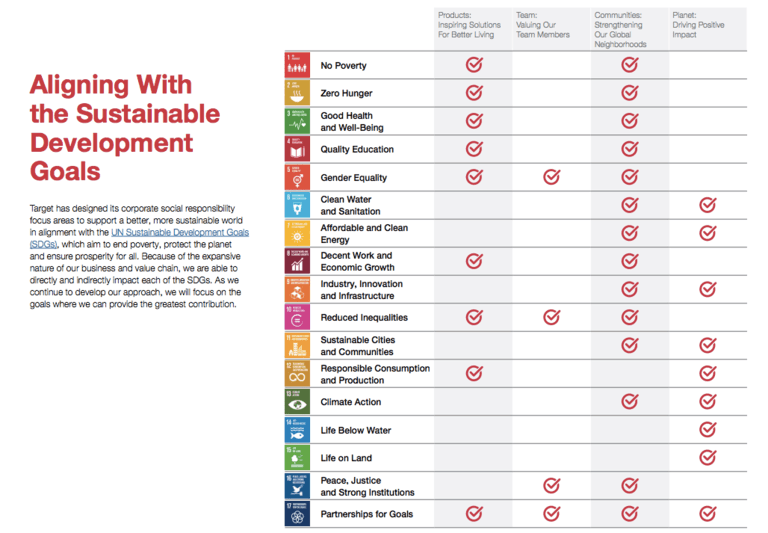Suburbs Left in a Lurch as Companies Return to the Cities


The narrative of urban decline, decay and crime that rose during the 1980s seems like a million years ago.
Urbanization, once seen as a trend only in the developing world, has now exploded across the U.S. as both young professionals and empty nesters seek the lifestyle and convenience of living in “smart cities.” After decades of stagnant and even declining population growth, cities such as New York, San Francisco, Washington, D.C. and Denver are booming.
And while educated and highly skilled workers are returning to cities, the evidence suggests that large corporations are increasingly following them as well.
The trend arguably started a decade ago, when Quicken Loans’ Dan Gilbert announced the relocation of 4,000 employees from southeastern Michigan’s suburbs to refurbished buildings in downtown Detroit. Whether or not Detroit has pulled out of its doldrums merits debate, as the population of the city still falters. But companies and foundations have been lavishing attention on America’s automotive capital. As Quicken Loans continued to move more employees to Detroit’s center and more companies and professional services have followed, downtown Detroit reportedly now has one of the lowest residential vacancy rates in the U.S.
Such moves make sense, as companies can be in closer proximity to the types of workers they want to hire – and at a macro scale, it is more efficient to have more of your workforce concentrated in a central area.
Another example is McDonald’s, which has put its Oak Lawn, Illinois office park on the market and is relocating to Oprah Winfrey’s former Harpo Studios complex in Chicago’s West Loop neighborhood. Soon after that 2018 opening was announced last year, the Golden Arches said it would lease even more space as it departs the western Chicago suburbs. McDonald’s will join agricultural commodities ADM, which moved to Chicago in 2013 after forty years in Decatur, a three-hour drive from America’s third largest city.
Companies are not just moving to cities in order to appeal to the too-cool-for-school millennial generation. Another factor is that cities are also willing to flap the red carpet in order to attract marquee companies. “Part of it is that cities are more attractive places to live than they were 30 years ago and are more willing to provide tax incentives, and young people want to be there,” said David J. Collis, a professor at Harvard Business School in an interview last year with the New York Times.
Joining these giant corporations are start-up ventures, which for years tended to flourish in “nerdistans” such as the Silicon Valley office parks in towns like Cupertino. But the desire to “be where the action is” has caused tech hubs to flourish in old rust belt cities like Detroit and even Milwaukee.
But it is not just the suburbs who have been left in the cold by the return of companies and their workers to large cities. Decatur is just one example of smaller cities that have been left behind by top companies. Fairfield, CT, was jilted by General Electric, which moved to Boston; the company’s former campus was sold last year. Connecticut’s capital, Hartford, bid adieu to Aetna with the insurer’s announcement that it will be based in New York City starting next year.
Cities benefit from this shift as not only companies and their employees relocate, but so do suppliers, contractors and services as they seek to be closer to their biggest customers. City leaders, however, would be wise not to crow too loudly about these wins. This move of wealth to powerhouses such as the likes of New York City, Boston and Chicago comes at the expense of smaller and more remote communities, which are left struggling to find ways in which to diversify their economies.
The concentration of wealth and resources in America’s largest cities also threatens to deepen the rift between richer and poorer citizens, one factor in Donald Trump’ triumph in winning the White House. The shellshock felt by citizens, who thought their jobs would be with them forever, will result in resentment for a long time as local leaders attempt to sort out how their cities and towns can remain competitive. As Jennifer Daly, a former head of the Greater Peoria Economic Development Council, told the Washington Post, “There are definitely people in this region who don’t want to go to Chicago and are worried that their jobs are going there.”
Image credit: Leon Kaye
Explainer: India, Global Warming and the Paris Accord


By Darshan Goswami
India needs a bold new climate and energy policy. To get there, the nation will need a new set of social and technical knowledge, transformational thinking, new policy tools, and major legislation. Here are several steps to move the country toward its Paris Accord commitment to cut greenhouse gas (GHG) emissions intensity [a measure of the global warming impact of the economy] by 33-to-35 percent, relative to 2005 levels, by 2030.
1. Introduce a carbon tax: Capturing carbon and reducing greenhouse gas emissions and planting trees could help slow and eventually reverse global warming trends.
2. Rapidly increase the deployment of renewable energy: Aggressively expand large-scale deployment of both centralized and distributed renewable energy— including solar, wind, hydro, biomass, and geothermal— to ease the strain on the present transmission and distribution system and reach more off-grid populations. Provide incentives to kickstart renewable energy programs for massive solar rooftops.
3. Develop national renewable energy (RE) policy - Enact and deploy a comprehensive new energy roadmap with innovative RE policies. In addition, set national RE standards — such as 20 percent by 2020, 40 percent by 2030, and 100 percent by 2050 — to create demand, new industries and innovation, and a new wave of green jobs.
4. Electrify transportation - Expedite a move to electrify transportation by encouraging expanded use of electric vehicles (EV) and plug-in hybrids, and deployment of solar-powered EV charging stations around the country. Develop and implement time-of-day pricing to encourage charging of vehicles at night and other times when peak demand is low. Adopt nationwide charging of electric cars from solar panels on roofs and solar-powered EV charging stations around the country. In addition, launch the public transportation system of the future with "zero-emission" battery-powered electric buses (like China is doing in their country) in all major cities to reduce air pollution, reverse climate change and global warming. India must make a massive shift that will lead to widespread adoption of EVs in the next five to seven years.
5. Energy efficiency: Promote energy efficiency in the economy, notably in industry, transportation, buildings and appliances. Make energy efficiency a high priority by expediting the development and implementation of cost-effective energy efficiency standards. To reduce the long-term demand for energy, engage states, industrial companies, utilities and other stakeholders to accelerate energy efficiency investments such as large-scale nationwide use of LED lamps.
6. Utility-scale projects - Phase out conventional energy subsidies, and develop a long-term plan to replace fossil fuel with utility-scale renewable generation. We can no longer ignore the effect of pollution and climate change on the health of our citizens.
7. Renewable innovative financing solution: Provide innovative financing (e.g., tax-free solar bonds or green infrastructure bonds) to instill more confidence from potential investors and decrease the cost of financing for renewable energy projects. Create and fund a national smart infrastructure bank to accelerate local demand for renewable energy.
8. Decentralized energy – Avoid future fossil fuel investments in India and instead emphasize nationwide deployment of community scale solar projects and micro-grids with storage. India’s present 40GW solar target should be extended to include photovoltaic panels on the rooftop of every home in India, generating enough power to reduce the country’s massive dependence on fossil fuels.
9. Micro-grids: Aggressively invest in a smart, two-way grid (and micro-grids). Invest in smart meters, as well as reliable networks that can accommodate the two-way flow of electricity.
10. Solar roadways - India should also take advantage of the vast, network of roads across India and the sun that beats down on them and turn them into energy-creating solar super highways. The idea of solar panel roads is to replace traditional asphalt roads with glass-based "solar panels that you can drive on" in a bid to turn roads into sources of renewable energy.
11. Develop energy storage: Including thermal, grid battery storage (e.g., Tesla Powerwall home battery backup), compressed air/gas, vehicles-to-grid/home, pumped hydro, fuel cells or hydrogen, flywheels, superconducting magnets and super capacitors. Develop a “hydrogen economy” plan. Recent innovations in hydrogen generation, storage, transport and use could transform it into the ultimate source of clean energy.
12. Transform India into a global solar manufacturing hub: Establish R&D facilities within academia, research institutions, industry, government and private entities to guide technology development.
India has the technical potential to meet its current power needs more than 10 times over with solar energy alone. There are no insurmountable technological or economic barriers to tapping India's vast potential to achieve 100 percent renewable energy. India can easily build a 100-percent renewable energy system at costs comparable to or less than what it would have to spend to continue its reliance on fossil and nuclear power. There is no downside to this transition. India can become the world leader and superpower in renewable energy, and eliminate pollution-related suffering of millions of people.
Darshan Goswami has more than 40 years of experience in the energy field. He worked as a project manager for renewable energy, micro-grid and smart grid projects at the United States Department of Energy (DOE) in Pittsburgh. Earlier, he was a Chief of Renewable Energy (Head) at the United States Department of Agriculture (USDA) in Washington, D.C. Mr. Goswami is a registered professional electrical engineer with a passion and commitment to promote, develop and deploy renewable energy resources and the hydrogen economy. In dedication to his life serving humanity and poor people, the author supports: India Foundation for Children Education and Care, Inc. (http://www.ifcare.org/).
Target Aligns CSR with UN Sustainable Development Goals


By Vikas Vij
Target recently published its 2016 Corporate Social Responsibility Report, which highlights the progress made with regard to its sustainability goals. The report also focuses on the company’s new commitments built around products, team, communities and the planet.
The expansive nature of Target’s business and value chain enable it to directly and indirectly impact each of the UN Sustainable Development Goals (SDGs). It has made fast work of meeting and exceeding past goals and has aligned the next set of goals with the SDGs in order to prioritize efforts.
In past reporting cycles, Target challenged itself to increase organic food offerings by 25 percent by 2017. It has already exceeded this goal, registering an increase of 139 percent in 2016. Similarly, the company had a goal to make at least 50 packaging designs more sustainable by 2016. It has exceeded this goal and delivered 162 enhanced packaging designs by the end of 2016.
Target aimed to achieve Energy Star certification in 80 percent of its buildings by 2020. By 2016, 76 percent of the buildings were certified, and the company expects to meet this goal earlier than expected as well. The retailer signed a Virtual Power Purchase agreement with Stephen’s Ranch Wind Farm in Texas. The 40 MW of wind power it produces is roughly equivalent to the power needs of 60 stores in Texas.
The company had committed to reduce water use by 10 percent per square foot in its stores by 2020. It exceeded this goal in 2016 with a 13.7 percent water reduction. It also exceeded its goal of 70 percent retail waste diversion by 2020, and finished off 2016 with a diversion rate of 72.3 percent.
In 2016, Target granted nearly $40 million in funding to organizations across the country to help youth and families build lifelong healthy habits, making "better-for-you" living easier and more accessible for all. It partnered with leading organizations committed to delivering proven solutions that help youth and families increase their physical activity and eat healthier every day.
Target has also announced one of the most comprehensive chemical strategies in the retail industry, focusing on driving transparency and ensuring proactive chemical management and innovation across every product the company sells, throughout business operations.
Moving forward, Target's goals will be aligned with the global sustainable development goals. Here's what that looks like:
The clarity of the goals has inspired many organizations to align sustainability progress. As Target's checklist demonstrates, the SDGs are an excellent way for organizations to measure impact both positive and negative. We expect to see more organizations using the SDGs to report on sustainability in the future.
Vikas is an MBA with 20 years of managerial and entrepreneurial experience and global travel. He is the author of "The Power of Money" (Scholars, 2003), a book that presents a revolutionary monetary economic theory on poverty alleviation in the developing world. Vikas is also the official writer for an international social project for developing nations "Decisions for Life" run in collaboration between the ILO, the University of Amsterdam and the Indian Institute of Management.
Image source: Flickr/Mike Mozart, Target 2017 Sustainability Report (PDF)
A version of this post originally appeared on Justmeans.
Corporate Responsibility Practitioner Roundup: Rolland Paper


In the run up to the COMMIT!Forum, CR Magazine spoke with Michele Bartolini, Marketing Director at Rolland Paper. Bartolini oversees marketing for the premium paper company, which puts reuse at the center of its business model.
CRMag: As a marketer, does telling the Corporate Responsibility (CR) story feel different from everyday sales & marketing?
Michele Bartolini Rolland’s CR story and our marketing story are really one and the same – there’s no dividing line.
This story is all about corporate responsibility, on the part of Rolland and our customers: Our objective is to make the best recycled paper, and maintain the smallest environmental footprint, to help our customers maintain sustainable supply chains. This is tied into our values, our actions, and what we stand for as a company – and our sales people tell this story every day.
In brief, CR is business-as-usual for Rolland.
CRMag: How has your understanding of CR — within your company or sector and as a general matter — evolved over time?
MB: As society in general has become more sensitized to environmental concerns, purchasing patterns have evolved and that has spurred demand for recycled paper – a responsible product.
Rolland has manufactured recycled paper since 1989, so we have a long-standing commitment to the environment. All the same, we continuously refine our practices, and work to stay at the cutting edge. One example is our Life Cycle Assessment, an evaluation of the environmental footprint of Rolland papers published in 2016, which uses the latest scientific techniques.
And our understanding of CR has evolved through our work with Canopy, a non-profit, to develop a comprehensive ancient-forest-friendly fiber procurement policy for our company.
CRMag: How do you convey Rolland’s CR's value proposition to your many different stakeholders?
MB: Here's how we segment them:
- Employees: We encourage all employees to come forward with their ideas and innovations across the board – and that includes CR-related matters. For example, our commitment to biogas energy was triggered by an idea from an employee who was then our Purchasing Director.
- Customers: Everything in our marketing mix – website, tools like our eco-calculator, collateral materials, conferences and events, and media relations – reflects our CR positioning.
- Public at large: Certifications like Forest Stewardship Council (FSC), ECOLOGO, and Ancient Forest Friendly tell consumers we comply with environmentally-friendly international standards.
- Influencers: Rolland’s Green Champions campaign on LinkedIn features interviews with sustainability-minded customers and partners.
MB: Gaining visibility in the U.S. market by continuing to be the best recycled paper manufacturer in the market, with a long-standing commitment to minimizing our environmental footprint, and maximizing the performance of our products so customers can meet their sustainability goals without sacrificing print quality.
Continuing to push the boundaries, such as being fully transparent by posting on our website the comprehensive Life Cycle Assessment of the environmental footprint of Rolland papers, from raw materials to disposal.
Publishing thought leadership pieces from sustainable organizations that have common values with Rolland, like the non-profit Canopy.
Partnering with customers, like LUSH and Cirque du Soleil, to share sustainability best practices.
Continuing to maintain the product certifications and attributes that make us an environmental leader in the industry, and disclosing that information in a transparent manner.
CRMag: What are your game-changing messages or takeaways for our audience?
MB: Any recycled paper consumer that wants to have a truly sustainable supply chain can up their game by partnering with us!
Rolland operates the only paper mill in North America fueled mainly by biogas energy, which keeps our carbon dioxide emissions at industry-low levels.
Rolland Enviro papers have a smaller environmental footprint than the average virgin and recycled papers in North America. This is mainly because of our 100 percent post-consumer recycled content, de-inking without chlorine, and usage of renewable energy – biogas and hydroelectricity.
EU Commission issues guidelines to strengthen CSR reporting


Germans discuss ethics of automated driving


Facebook's Sysphean Quest for a Fair Hate Speech Policy


Last year, at the height of the presidential campaigns, Facebook CEO Mark Zuckerberg found himself in an unwinnable dilemma: Donald Trump, Facebook employees said, was promoting hate speech. His presidential candidate speeches were advocating a ban on Muslims and promoting selective treatment based on religion. They should be taken down, Zuckerberg was told.
But the Facebook CEO eventually decided to let the posts stand. Taking down a presidential candidate's posts not only cuts into valuable revenue (at the time, the social media company was looking at a minimum of $300 million in revenue from such promotions), it can be misinterpreted as a partisan move to squelch a candidate's platform.
"When we review reports of content that may violate our policies, we take context into consideration," a Facebook representative told Business Insider. That context in this case, the company defended, was "political discourse," and the right of people to express opinions freely without having their posts taken down.
That decision is now coming back to haunt Facebook. Although taking down the posts might have given critics the ability to accuse Facebook of partisan behavior, keeping them up became fodder for another problem -- one that ProPublica writer Julia Angwin says has is ongoing. The policy itself -- ProPublica claimes -- is biased.
According to fairly detailed research, the nonprofit publication found that grown white men are less likely to have hate posts taken down by Facebook than African American children.
And it isn't just the controversial words of the President that are raising questions about the unequal lens through which hate speech incidents are viewed.
In June, following the shocking news of a terrorist attack in London, Rep. Clay Higgins provided his provocative "answer" to "radicalized" Muslims: "Kill them all. For the sake of all that is good and righteous. Kill them all." He didn't offer an explanation of how those doing the hunting should ensure that innocent Muslim citizens weren't caught in the fray, and his post wasn't taken down.
Compare that, said ProPublica, with what happened when Black Lives Matter activist Didi Delgado posted "All white people are racist. Start from this reference point, or you've already failed." The post was taken down and Delgado was temporarily blocked from posting on Facebook. Delgado objected and launched a petition on Change.org.
Angwin pointed out that it wasn't a question of whether the posting was offensive or not, but the apparent double-standard between what happened with Higgins' post and Delgado's.
But according to documents ProPublica obtained from Facebook, there was a reason for that double-standard, and it had to do with the sub-set of individuals that were targeted by the hate speech.
"Higgins’ incitement to violence passed muster because it targeted a specific sub-group of Muslims — those that are 'radicalized,'" said Angwin, whereas Delgago's statement was a sweeping statement about one race of people that in Facebook's view, could potentially incite violence against that target group as a whole.
So was a cover page posted by San Francisco resident Phyllis Meehan. According to the social media site, posting the title "All Men are Trash" can get your page taken down and your access blocked for 24 hours. Again, it targets a broad section of the population, not a sub-set of men. And as Gizmodo points out, Facebook was fairly consistent in enforcing this policy. Each one of Meehan's friends that reposted the statement in protest found their posts taken down, and that includes a male Facebook poster who took exception to the guidelines.
For Facebook, monitoring hate speech isn't a simple process and is complicated by the fact that it is constantly forced to consider varying laws around the world that affect how it enforces standards. Both Facebook and Twitter have run amok of European laws which show far less tolerance for hate speech than those in the US.
Still, Facebook argues that its onerous list of rules points to its effort to monitor both hate speech and the right to free expression. The policy limits hate speech toward protected groups of individuals (largely those defined by sex, religious affiliation, race, national origin, gender identity, sexual orientation, ethnicity or serious disability or disease), but otherwise airs on the side of protecting speech. So criticizing a religion may offend readers but won't necessarily get you blocked. Criticizing those who affiliate with that religion -- who could become targets to violence -- however, may.
ProPublica also found that reasons for take-downs aren't always clear and predictable. "Users whose posts are removed are not usually told what rule they have broken, and they cannot generally appeal Facebook’s decision," notes Angwin, although some users, like Leslie Mac have found that publicity does tend to influence Facebook's decision-making. After her post, which began with "White folks, ..." was taken down, she found herself the topic of a TechCrunch post, which criticized Facebook's actions. The social media giant apologized and reinstated her post.
And she isn't the only one who has prompted a change of heart by going public. Letters of criticism from Norway, Morocco and other venues calling out Zuckerberg specifically have turned the tide and helped to ensure that Facebook's hate speech criteria is modified. Those criticisms have also forced the company to clarify what its perspective is on offensive material.
While Facebook protected Trump's right as a presidential candidate to post controversial statements about Muslims, like "calling for a total and complete shutdown of Muslims entering the United States ..." his administration has been forced to rethink the practicality of such statements. A federal judge eventually turned the attention to Trump's social media comments when he pointed out earlier this year that those statements served to validate Trump's intention to discriminate against all Muslim immigrants.
Still, some would argue that Facebook should have taken down this statement since it lobbied against a protected religious group and that Facebook in effect, violated its own rules. And that's left some readers to wonder whether it is really protected categories that Facebook is shielding, or the revenue it earns from powerful voices.
Flickr image: Andrew Feinberg
California Extends Bipartisan Carbon Cap and Trade


On Monday night, the California Legislature passed AB-398, which extends the state’s cap-and-trade climate law to 2030. The bill passed both houses easily, though largely along party lines. Nevertheless, AB-398 had considerable bipartisan support compared to other bills debated and passed in Sacramento. GOP advocates included former Governor Pete Wilson as well as George Shultz, who served in the Eisenhower, Nixon, and Reagan administrations.
Wilson, in a letter reportedly sent to Republican legislators in an effort to garner their support, said, “The choices are limited, and unfortunately you are faced with what you can do to make a bad situation better.” Wilson opined that other options, such as a carbon tax, would be "truly disastrous for our state."
Shultz described AB-398 as an effort that would have made Reagan, under whom he served as Secretary of State, "proud," insisting that the law’s extension is a "common sense, free-market approach."
The bill had considerable support from the private sector as well as environmental NGOs. In an op-ed co-written with Fred Krupp, President of the Environmental Defense Fund and Allen Zaremberg, CEO of the California Chamber of Commerce, Governor Jerry Brown said, “Not only is the program helping the state to cut carbon pollution, it’s also injecting billions of dollars into new and innovative clean energy and green technology projects that create good-paying jobs.”
Earlier this year, California declared that it would strive to reduce its greenhouse gas emissions by 40 percent below 1990 levels by 2030. Gov. Brown and his allies have touted California’s cap-and-trade program as a market-friendly approach to curb the state’s climate footprint while helping to boost jobs necessary in a twenty-first century economy.
The economic development angle appealed to some Republicans, including Assembly Minority Chad Mayes. His district represents parts of Southern California’s Inland Empire and High Desert, which suffers from some of the highest levels of air pollution in the state and country. Following Shultz’s footsteps in evoking Reagan, Mayes posted on Twitter that bipartisan passage of AB-398 “is something Ronald Reagan would be proud.”
[embed]https://twitter.com/ChadMayesCA/status/887098365304950784[/embed]
The bill’s passage means that carbon-heavy industries will still be required to purchase permits in order to pollute. Supporters often argue that cap-and-trade is necessary in order to incentivize companies to make their operations leaner and greener. Debate over its extension continued over several months, as opponents of the system argued that the program was more of a regressive tax than a climate change curb.
The result of the ongoing debate was that California’s cap-and-trade program began to suffer as participants became doubtful of its long-term viability. “Previously, with cap-and-trade in jeopardy, quarterly auction results were mixed, because participants weren't sure if the program was going to continue,” argued Katie Fehrenbacher on GreenTech Media, who added, “The extension will bring more long-term funding certainty for cleantech.”
Environmental groups were quick to applaud AB-398’s passage, and were quick to point out than an imperfect bill was preferable to letting the cap-and-trade program lapse.
"Businesses depend on market certainty to invest, grow and hire new workers,” said Mary Solecki, Western States Advocate for the national, nonpartisan business group E2. “No legislation is perfect, but this vote provides much-needed certainty to California's clean energy businesses and investors and the nearly 520,000 Californians they employ.”
Sig Anderman, executive chairman and co-founder of the mortgage technology company Ellie Mae, is one business leader who argued that passing AB-398 would be a boon for business in California. “The new 2030 targets build upon California’s legacy of ambitious, leading-edge climate and clean energy policy that catalyzed our booming clean tech economy,” he wrote in an op-ed posted last weekend.
With 18 months left in his tenure, Gov. Brown has been successful at working with the California Legislature to cement his environmental legacy. On Monday night, both houses passed AB-617, a law that seeks to improve air quality in the state’s more polluted communities.
Image credit: Pedro Szekely/Flickr
HSBC Investigates Major Palm Oil Supplier Over Deforestation Allegations


According to the NGOs Greenpeace and Environmental Investigation Agency (EIA) the global banking giant HSBC has launched an investigation of Indonesia’s Noble Plantations over allegations that the company has been ready to clear cut thousands of hectares of rainforests in the remote province of Papua.
HSBC’s inquiry was triggered by complaints from Greenpeace and EIA, which presented the bank, as well as Rabobank, ABN Amro and ING, evidence that Noble was preparing to clear 18,000 hectares (69.5 square miles) of rainforest. That area primed in order to transform that land into palm oil plantations is about the same size as Washington, D.C. In the meantime, the global sustainable palm oil industry group, the Roundtable for Sustainable Palm Oil (RSPO), has reportedly ordered Noble to stop any development of its land concessions until HSBC’s investigation is complete.
EIA says this is the first time a major financial institution has requested that the RSPO investigate one of its own clients. Along with the three other banks, HSBC had contributed to the formation of a $750 million bond issue for Noble.
HSBC’s ties to Noble and other companies within the global palm oil supply chain had subjected the bank to criticism from Greenpeace, EIA and other environmental groups. Earlier this year, Greenpeace accused HSBC of funding “forest destruction” due to its lending of millions of dollars to Noble, Salim Group and other palm oil producers and suppliers. After Greenpeace publicly released evidence, including videos, which documented the destruction and development of rain forests, HSBC and other banks declared earlier this year that they would enact far more stringent “no deforestation” lending policies.
That shift made HBSC’s declarations more consistent with the “no deforestation, no peat and no exploitation” NDPE policies that have become more commonplace within the global palm oil sector. Greenpeace welcomed the change in policies, one of which was HSBC’s insistence that all of the bank’s customers publish their individual forest protection policies by the end of last month.
Greenpeace’s take on these policies is that such commitments are critical as the rate of deforestation in Indonesia has overtaken that of Brazil’s. Meanwhile, Brazil’s agricultural sector has shown interest in becoming a more prominent global palm oil producer. Environmental groups in turn have warned that the political climate in Brazil has helped accelerate the rate of deforestation in country, with the growth of palm oil only promising more pressure on the country’s declining forest cover.
HSBC’s announcement that it will investigate one of its own clients sends yet another message to wayward palm oil companies: continued deforestation, and any concurrent human rights violations exacted on local communities, will only impose more long-term risk to their business. Last month, a huge supply of palm oil sourced by a Korean-owned company was made readily available to global markets – but according to the NGO Mighty Earth, the fact that palm oil had links to deforestation in Papua meant that there were no takers, as food and personal care companies are becoming more serious about stopping deforestation within their supply chains.
Image credit: Achmad Rabin Taim/Wiki Commons
The Age of Geohealth: Why Place, Public Health and Climate Change Matter


By Daphne Stanford
I can still remember the moment I realized that Americans are spoiled. It was the summer of 1995 and I’d just returned from a trip to Kenya. I drove to to the mall with my mother and watching people carry massive plastic shopping bags back toward the seemingly endless rows of shiny new cars, I felt sick to my stomach. Something had changed.
Fast forward to the year 2017. We have a former reality TV show host as our president, and the administration is replaying bad do-over sequels of the Cold War, but worse. At a time when famine has reached a crisis-tipping point, the current administration wants to cut aid for the places that need it most: South Sudan, Nigeria, Yemen, and Somalia. Meanwhile, plenty of funds have been added to the Pentagon’s already-bloated military budget.
But let’s forget about what #45 is doing, for a moment, and instead focus our attention on the discipline of geohealth—or, the intersection of geography and public health. In 1854, Dr. John Snow apparently identified a contaminated water source by using a map; Snow was able to connect that same source of water to an earlier cholera outbreak in England. In this way, public health and spatial sciences like surveying, geographic information systems, hydrography, and cartography have become increasingly intertwined.
Where this should lead medical professionals with an eye on geopolitics is straight to the African continent, but the situation is more complicated than that. The Sudanese government has threatened to raise the price of a travel/work Visa for an aid worker to $10K from $100—though the increase hasn’t been implemented, as of yet. Nonetheless, Jane Ferguson argues, “It’s a stark reminder to aid agencies that their relationship with the government is increasingly shaky.” Ferguson goes on to document how difficult documentation has become for journalists there; she says that, in ten years of reporting, Sudan’s current level of government intimidation is the worst she’s ever seen.
In light of these facts about refugee situations, it’s unconscionable to fail to take a refugee’s circumstances into consideration, when treating them in a professional setting. It’s critical that we all remain committed to ongoing cultural education about the state of the world we live in; a bit of empathy can transform people’s ability to understand the individual and cultural circumstances that led them to find themselves in their present situation, rather than fixating on relatively insignificant language or cultural differences. Healthcare professionals must implement integral practices that promote social justice, equality, and community wellness.
Despite everything, there seems to be hope in the form of increasing media exposure and relief aid workers in all affected nations—with the exception of South Sudan, where security and access are still a major obstacle to getting aid to where it’s most needed. Doctors Without Borders (a.k.a. Medecins Sans Frontieres) is there in limited numbers, but their access to many areas in South Sudan is severely restricted due to ongoing military conflict.
Luckily for future aid workers to any of these regions, as well as people native to the affected areas, a cholera vaccine was recently approved by the FDA for use in defense against the life-threatening disease. Ironically, cholera is relatively simple to treat, and much progress has been made through distributing kits: cholera simply must be treated promptly with antibiotics, oral rehydration salts, and fluid replacement. However, this is more easily said than done when water, food, and sanitation supplies are blocked from delivery to many regions via military force. The end result is malnutrition in many people, most devastatingly in children.
* * *
To pivot a bit, here, it’s arguable that many of the current refugee crises and resettlement situations can be traced to extreme climate change and fossil fuel-related conflict. In his recent piece for NY Mag that seems to have gone viral, David Wallace-Wells argues that climate change is directly tied to increases in armed conflict; and the industrialized world’s obsession with extracting as much oil as possible from the Middle East is connected to recent warming trends, as well. Wallace-Wells provocatively characterizes the current climate system as going to war with humans “for many centuries, perhaps until it destroys us.”He goes on to mention James Hansen, a leading climate scientist. Hansen stresses that, in addition to curbing rapid population growth, what’s desperately needed is “a simple, honest carbon price.” This is part of why education, research, discussion, and awareness of the connections between geographic regions, climate change, sea levels, and public health are so crucial to finding solutions to current climate crises, worldwide.
We must stand together to oppose policy decisions such as cuts to foreign aid at a time of unprecedented famine and warfare. We need leaders like Abby Maxman, President of Oxfam America, and others well-versed in diplomacy and critical thinking skills to take the helm, in the absence of any meaningful leadership in the current presidential administration. We can’t allow ourselves to become numb to the realities of the world’s needs, as a whole, while only being concerned with obtaining ever more unnecessary creature comforts here in the industrialized world.
* * *
Daphne Stanford writes poetry & nonfiction, and she believes in the power of art, education, and community radio to change the world. Since 2012, she’s been the host of The Poetry Show! Sundays at 5 p.m. on Radio Boise. Follow her on Twitter @TPS_on_KRBX.Image Source: Amnesty International